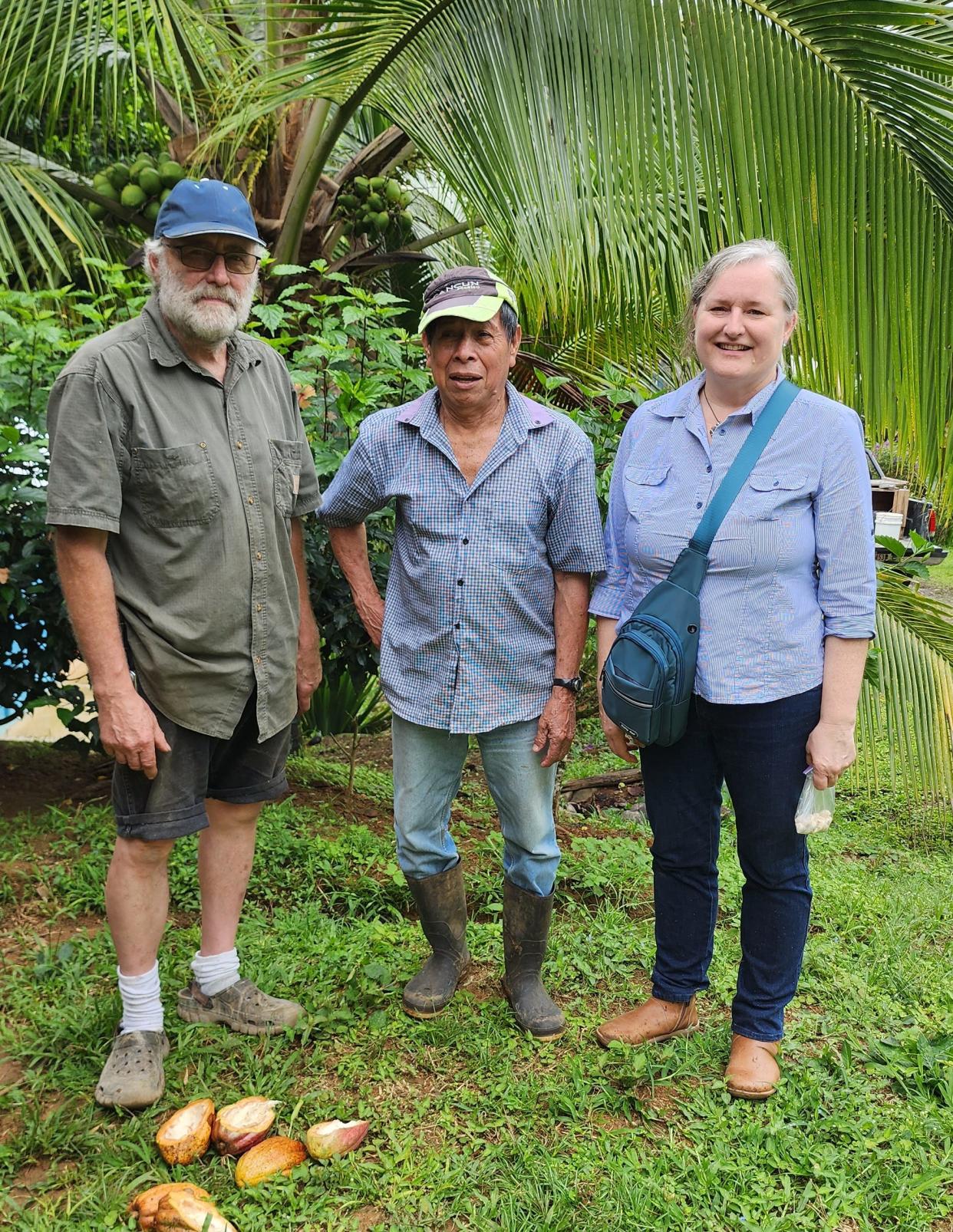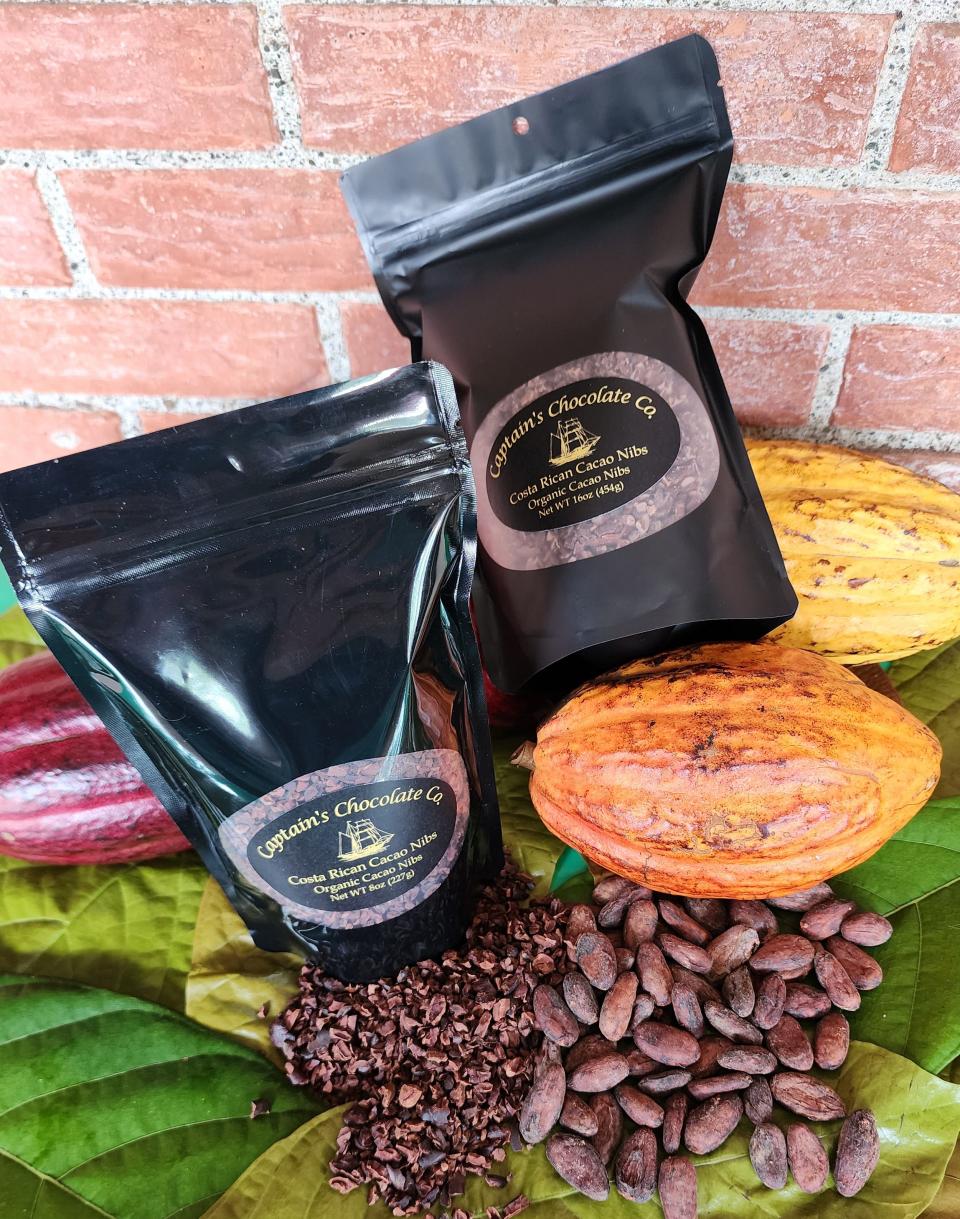A desire to make a difference led to the creation of this Wisconsin chocolate company

Just two ingredients go into the signature dark chocolate at Captain’s Chocolate Co. It’s a point of pride for Sarah Uhing and her vegan, organic chocolate brand based in Neosho.
This bean-to-bar chocolate story starts in Costa Rica with seven varieties of cacao trees, 15 family farms, and Uhing’s brother. While working as an Alaska salmon fisherman, Mark Roth was looking for a place to spend the off-season. He made his way to Costa Rica, where he began working with Indigenous farmers to help them sell their cacao. The desire to make a difference led to building a chocolate factory and the growing family business.
Today, much of the family pitches in to operate the commercial kitchen and Captain’s Chocolate retail store, N2225 County Road EE, Neosho. They make organic, vegan chocolate, cacao brew, nibs, and chocolate-covered fruits and nuts. The store is open 11 a.m. to 6 p.m. Wednesday and Thursday and 11 a.m. to 4 p.m. Friday and Sunday. Uhing offers classes and fondue off-site and in-store, including classes for kids at the nearby Catholic Ecology Center, W1468 County Road NN, Neosho.
Uhing spoke with us in January as she prepared to take a trip to Costa Rica to visit the farmers.
How she came to run a chocolate company
it is my oldest brother’s fault. My brother Mark has been a salmon fisherman in Alaska for 40 years or more. He wanted to get out of the winters in Alaska. He settled on Costa Rica. He can’t just go and veg out. He got involved with the local people and started doing teen mission camps. He’d take teens from the U.S. to Costa Rica and do projects. One of the projects, they’d make food bags and take them to the mountains and the Indigenous tribes there. They got to know them over the years, and they got to trust Mark. You’ve got a person who is willing to walk through the jungle for a day and a half for a bag of food. It is not like jumping in your car and driving to Ruby’s Pantry. So you know things are not financially happy. He asked, "Why are you not selling your chocolate?" The local chocolate place was only paying 60% of the world market price, and they had trouble getting their beans to market. The roads are tough. They had a tree fungus come through, so they wouldn’t produce cacao. Mark bought 10,000 seedlings from a place in Costa Rica, sort of like the Department of Agriculture here. These are non-GMO, just hybrids developed to be fungal-resistant. He got seven different varieties so if something comes through, nothing will wipe them out entirely. That was about eight years ago. Those are the beans we buy, from those trees. We work with two tribes there. That is how we ended up with chocolate.
Our original plan was to have the chocolate completely made in Costa Rica. We wanted to have a big impact on the economy for them. What we found out was shipping finished chocolate is a dangerous thing. It can melt in an instant. ... We built a facility to do the fermenting, roasting, drying, and we get chocolate nibs. We do the molding, grinding, tempering here. It works very well, and we end up with consistent quality chocolate.
What prompted her to build a commercial kitchen
I got my business license and the LLC set up in November 2018, and 2019 I started going to farmers markets. Then I went to a food summit in Madison, met inspectors. I found out that chocolate does not fall under the cottage law. ... Friends run Back to the Best Country Store (in Rubicon), an organic store. They built a commercial kitchen to do coffee. They allowed me to use it so I could be legal until I got mine built. We are now a licensed food processing facility here. It sounds very grand, but it is one 12-by-16 room. We are inspected every year.
Chocolate is an investment in patience
It takes a (cacao) tree four years to start producing. Once they start producing, cacao grows year-round, the tree produces year-round. It produces most in December and June. We’re going to the mountains and picking up beans at least once or twice a week.
What she wants consumers to know about Captain’s Chocolate
Our chocolate is two ingredients. You don’t need stabilizers and emulsifiers in chocolate. Chocolate is stable. They put it in because it is cheaper. They don’t have to put in as much chocolate. Soy lecithin? That’s garbage. Some say it makes it creamier. Well, I grind mine for 24 hours. People say it is so smooth. We put a lot more labor into our chocolate than most chocolate companies want to, because I want to bring the purest chocolate I can and that I can afford to make.
Our just dark chocolate, the 90% — we also have a 100%, 75 and 60 — the ingredients are cacao beans and cane sugar. All our beans are organic.

What you need to know about fermentation and flavor
We ferment our beans almost all the way through, like a 98% ferment rate. Industry standard is about 75%. That fermentation process is the number one thing that makes bean-to-bar chocolate and affects the flavor. That is why people buy organic bean-to-bar chocolate and think it is bitter. It wasn’t truly fermented long enough.
We had our chocolate third-party tested. We have no discernible lead and the cadmium was extremely low. That’s a big thing right now. Consumer Reports did a story. There is a lot of contaminated chocolate. Ours is not. You can eat it safely.
Their process from pods to production
We have covered drying sheds; we do not leave them sitting in the open. We built our own roaster. Those cost $15,000 to $20,000 and you’d have to have it shipped to Costa Rica. My brother bought a rotisserie oven, and my husband is a machinist and built the barrel out of stainless steel mesh. We can roast about 100 to 150 pounds of beans. Before that we were doing batches of seven pounds. ... Roasted and nibbed, when we have enough, it gets shipped by air. ... I go to Chicago and pick it up and we turn it into chocolate, sell it as nibs or cacao brew.
My son-in-law actually makes the chocolate now. It has turned into a family thing. My 90-year-old mom does all the labeling. My 17-year-old granddaughter does the packaging.
Farm families are the root of this business
We have about 15 farm families we support at this point. We’re hoping to greatly expand that. Five of our farmers are lady farmers. I’m very proud of that. I’m excited to go back (to Costa Rica) and bring them some of the chocolate, so they can see what they’re producing.
Beyond the chocolate bar
The other thing we have that is cool and different is cacao brew. It is pure cacao. You grind it, you make it in a French press if you have one, or throw it in a pot and simmer on the stove, strain it.
Making conscientious choices beyond chocolate
I bought a panning machine. We now have chocolate-covered raisins, chocolate-covered almonds. The almonds I use are not necessarily certified organic. I found them from a place in California. My almonds are processed with steam, not chemicals. I try to research ingredients. My raisins are flame raisins, an organic unsulphured. Less chemicals. I try to get the best ingredients, but they are not the cheapest.
Where to find Captain’s Chocolate
Our chocolate is very hands-on and small scale. We are really poised right now to grow. We have (products in) about 12 different stores, like Fox Bros. Piggly Wiggly, Daybreak Mobil Gas Station in Delafield, Albrecht Sentry in Delafield, Total Health Nutrition in New Berlin and Menomonee Falls, and Milk ’N Honey in Wauwatosa.
Our store is located at an old salvage yard. We’re in the middle of the country. We don’t get a lot of foot traffic. Supporting the business of a brick-and-mortar store isn’t realistic. We’re working on other retail outlets, and to sell ingredients like the cacao beans, nibs and chocolate liqueur to other chocolate makers. Dan (Bieser) at Tabal Chocolate (in Wauwatosa), he tried our beans and we sold to him. We do have the quality, because we built the plant and the fermentation process.
Beyond the chocolate
I want to have more farmers, make an impact. My brother built a women and children's shelter in Costa Rica. I’m going down there. I’m taking sewing stuff and I’ll teach the ladies to sew. When they graduate, I give them a sewing machine and all the stuff they need. This will be my second year doing that. That’s just a personal thing I do for myself to feed my own soul.
This article originally appeared on Milwaukee Journal Sentinel: A desire to make a difference led to the creation of this Captain's Chocolate Co.

